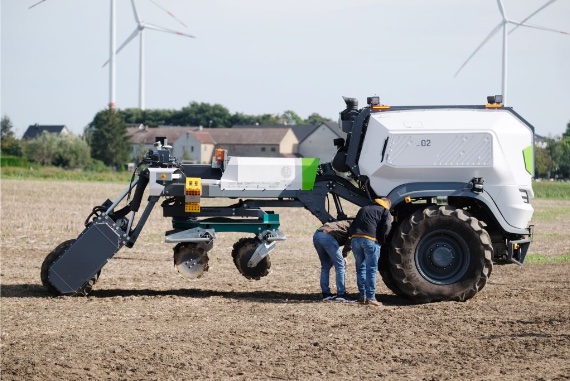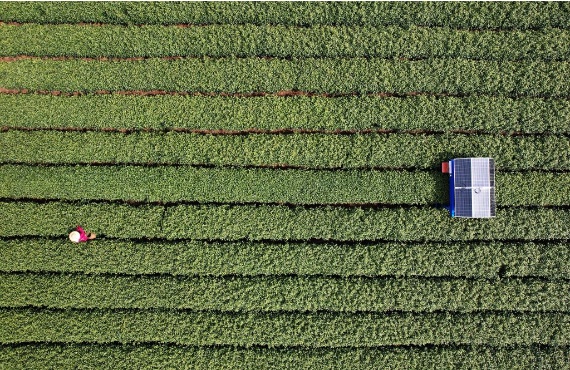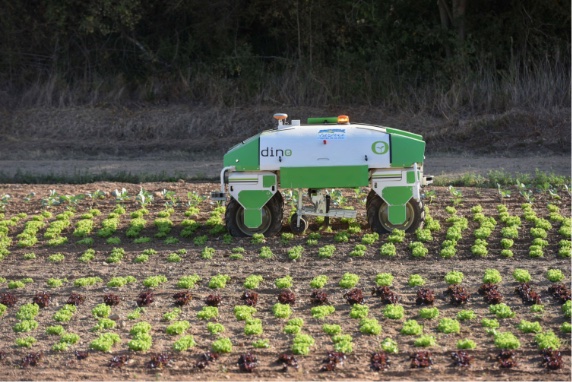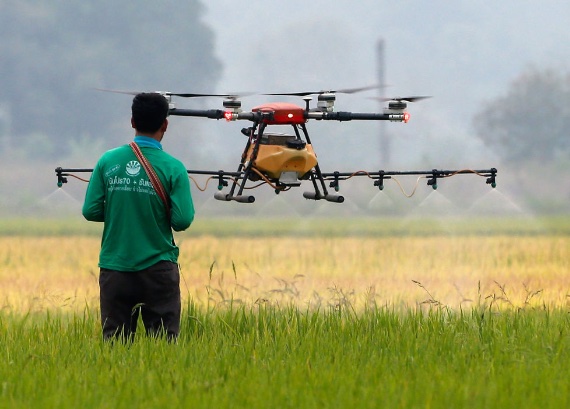As agricultural robots become increasingly mechanically adept and analytically capable, they are poised to offset human labour shortages and produce more with less.
The agro-food sector of the future is one of those technological, economic and human challenges that is particularly complex due to its combination of variables. On the one hand, the world’s population is growing, and with it the need to feed all those increasingly long-lived mouths; on the other hand, some effects of climate change, such as the depletion of fertile soils, together with regulatory restrictions on herbicides and fertilisers, could reduce productivity.

Both urban migration and changing occupational expectations— for example, the disappearance of generational replacement in agricultural occupations or the lack of technological skills—combined with an ageing population, are contributing to farm labour shortages. In this context, the OECD has published a report on this structural deficit of workers and skills in the agro-food sector and the need to balance food security with environmental sustainability.
150% annual growth for agricultural digitisation
Although the solutions to these challenges are complex, one of them is gaining prominence because of its ability to replace or complement the human workforce: agricultural robots. This is clear from studies that forecast 150% annual growth in the five-year period 2020-2025 for agricultural digitisation, or the leap from $1.1 billion in sales of field robots in 2020 to a whopping $11 billion by 2030.
“Agriculture is constantly evolving with the same objective of yield increases to ensure sufficient production. Different factors such as reduction of crop protection usage or labour shortages, lead farmers to change the way of thinking and working. Robotic solutions are an answer and will be part of the future,” says Renaud Tessier, Product Specialist at Vantage AM, a partner of Denmark-based Agrointelli, one of the leading companies in the agricultural robots sector.
On the other side of the hemisphere, Western Growers Association, an organisation representing farmers in several US states, wants to automate farms to reduce their dependence on scarce labour and prevent the market for their fresh produce from migrating to countries without such shortages.

What can agricultural robots do for food security? The short answer would be “almost anything a human worker can do,” sometimes not as efficiently and sometimes much more so. The concept tends to cover the whole gamut of tillage, from simple tasks requiring strength and repetition to more complex tasks of monitoring and analysis for precision farming [monitoring crop parameters, soils and climatic factors to apply treatments at exactly the right place and time] with an emphasis on intelligent planning. According to Agrointelli, at least for the time being, agricultural robotics is expanding mainly on the most productive farms with the greatest need for labour, such as vegetable production, fruit orchards or vineyards.
Among the robots that can mimic flesh-and-blood workers are multi-purpose platforms that can be connected to various implements, so that a single machine can carry out the tasks of sowing, weeding, ridging or spraying phytosanitary products.
Artificial Intelligence in agricultural robots
In addition to perfecting skills for mechanical tasks such as harvesting, the leap in quality and capacity comes from incorporating the power of artificial intelligence (AI) and machine learning, data analytics, artificial vision or advanced sensors—for humidity, temperature, pH, plant physiology, etc.—as well as communication between devices—from a remote control device to a drone or satellite—or various levels of autonomous driving.

This fusion of both mechanical and processing qualities—the equivalent of a brain connected to a skilled hand—extends the variety and versatility of robots, for example drones with articulated arms to pick fruit, and whose AI algorithms allow them to visually recognise the ripeness and size of a pear, or apply the right pressure to pick it without damaging it.
If it can be done from the air, it can also be done on the ground, as Spanish company Robotnik points out: “Intelligent systems are becoming the ideal solution to drive precision farming. Today, a large number of agricultural operations are already being done autonomously.” For example, the delicate involvement of collaborative robots in grafting, or the selective and calibrated application of pesticides only on the plants that need them.
This has led to the adaptation of these robotic platforms for specific tasks in vineyards, olive groves or strawberry plantations, to name just a few crops with specific needs, as well as for multi-purpose work in greenhouses or activities such as pollination using micro-drones, insect farm management or pest control, be it blueberries in the Balkans or rapeseed in Finland.

In general, agricultural robotics firms were born in this century. This is a nascent sector that can benefit from current advances in robotics, such as prototypes that mimic physical muscles by means of hydraulic compartments contracted and expanded by electrical currents. They would allow not only robots, but also prostheses, mechanical arms or exoskeletons to combine precision and delicacy with strength.
Comments on this publication